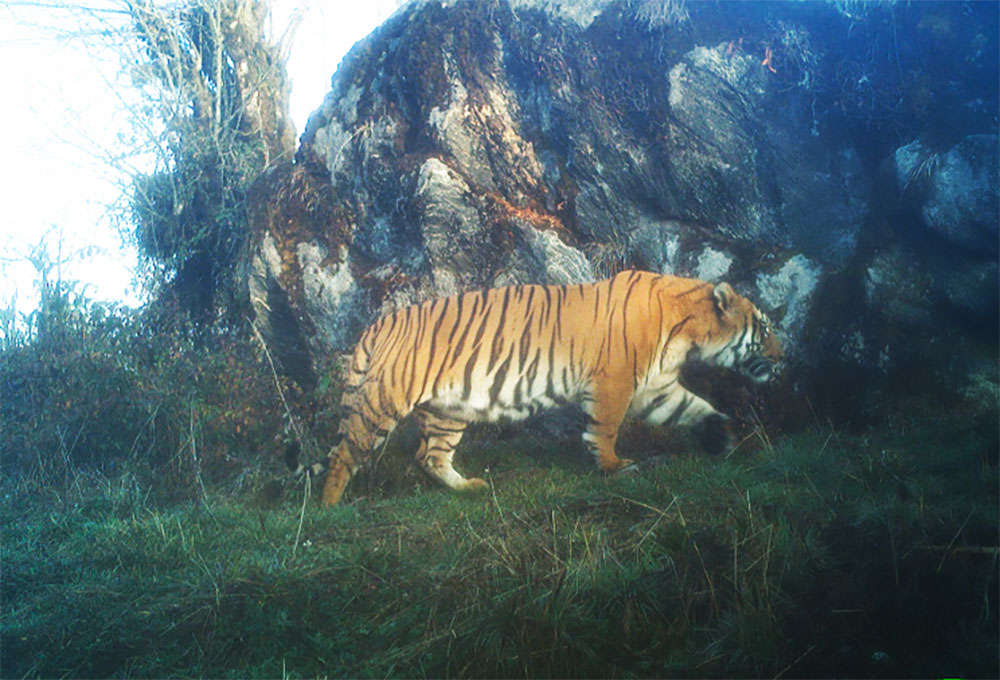Bhutan, a haven for biodiversity, is celebrating a remarkable success story with its tiger population. A recent national survey revealed a staggering 27% increase in tigers over the past six years, bringing the estimated population to 131 individuals. This exciting growth is further amplified by documented cases of tigers dispersing long distances, venturing into new territories, and even crossing international borders.
One fascinating example involves a pair of siblings from the Royal Manas National Park (RMNP) who embarked on incredible journeys eastward. One settled in Mongar, while the other ventured all the way to Trashigang. These sightings represent the first confirmed tiger presence in these areas in quite some time.
But what motivates these long-distance travels? While tigers naturally move in search of food and suitable territory, the existing healthy tiger population within RMNP and the adjoining Zhemgang Forest Division suggests that territory expansion might be the primary driver in this case.
This dispersal behavior is critical for tiger conservation. It allows for the establishment of new populations, reduces inbreeding within existing ones, and helps maintain a healthy overall tiger population across Bhutan, known as a single, well-connected metapopulation.
The story doesn’t end there. A recent case documented a tiger moving between Sikkim in India, and Samtse district in Bhutan. Surprisingly, this tiger, was previously recorded in Jigme Singye Wangchuck National Park (JSWNP) during the 2021-2022 national tiger survey. The tiger had crossed hundreds of kilometers and several rivers to travel from Central Bhutan to the west into Sikkim before returning to Samtse in April of this year. It suggests successful breeding within Bhutan, allowing young tigers to disperse and potentially establish new territories even beyond Bhutan’s borders. This confirms Bhutan’s role as a source site for tigers in the region.
But how are these long-distance journeys possible? The answer lies in Bhutan’s robust network of protected areas and biological corridors. These corridors are essentially pathways of intact forest cover that connect protected areas, allowing animals like tigers to safely navigate between them.
These instances of transboundary movement emphasize the importance of international collaboration and conservation initiatives. Bhutan’s well-connected protected area network, intact forest cover, and functional biological corridors are allowing tigers to move freely, potentially even contributing to the overall health of the tigers in the north-eastern part of the Indian sub-continent. Bhutan could potentially connect the tigers’ populations in the Terai Arc Landscape to the tiger populations in the eastern Himalayas.
Bhutan’s success story offers invaluable lessons for tiger conservation worldwide. By prioritising protected areas, maintaining crucial corridors, and fostering international collaboration, Bhutan has emerged as a beacon of hope for these magnificent creatures. Our thriving tiger population demonstrates that conservation efforts, when implemented effectively, can yield remarkable results. As Bhutan continues its exemplary conservation practices, we can all celebrate the roar of a resurgent tiger population echoing through the majestic Himalayan landscapes.
Contributed by Tashi Dhendup,
Bhutan Tiger Centre, Nature Conservation Division, DoFPS


